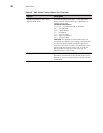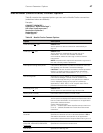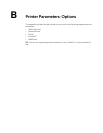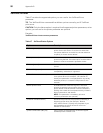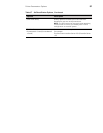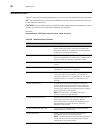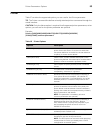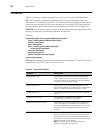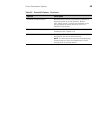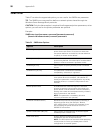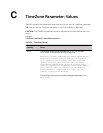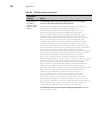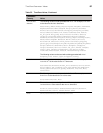
54 Appendix B
PrinterURI
Table 17 contains the supported options you can use for the PrinterURI parameter.
TIP: The PrinterURI command line defines a printer using a URI supported by the
Common Unix Printing System (CUPS). This command is useful when you want the thin
client to access a printer for which you already have a working CUPS client because
you can simply copy the URI from the /cups/printers.conf file on the existing client.
CAUTION: Only the Name option is required for all supported printer parameters; other
options you can use for the printer parameter are optional.
Example:
PrinterURI=[ipp://[user[:password]@host[:port]/path
[http://[user[:password]@host[:port]/path
[socket://host[:port]
[lpd://host/queue
[smb://[user[:password]@[workgroup/]
server[:port]/sharename
[usb:/dev/usb/lpunit
[parallel:/dev/lpunit
[serial:/dev/ttySunit?baud=speed
common parameters
TIP: Additional protocols beyond those listed here (for example, FTP and TFTP) may be
supported by the CUPS system on the thin client.
Table 20 PrinterURI Options
Options Description
[Default={yes, no}] Indicates that the option block defines the default
printer for the thin client. If it occurs on more than
one printer definition in the INI file, the last definition
to specify is chosen as the default.
[Description=text] Offers a short, human-readable description of the
printer being defined. If the description includes blank
spaces, it must be enclosed in quotation marks.
[Enable={yes, no}] Yes/no option to specify that the printer is available
for use.
[EnableLPD={yes, no}] This parameter is retained for backwards
compatibility; otherwise, it is ignored.
[ModelID=Linux driver name] Identifies the printer for the purpose of choosing a
Linux printer driver (for example, “HP LaserJet 4”).
Usually this parameter is not specified for any locally
attached printers; it is used for LPR printers on the
network.
Name=printer name Provides both the name that is given in the local
printers list and the internal name of the local print
queue. Name must be between 1 and 16 characters,
starting with a letter and composed entirely of letters,
digits, underscores, and dashes.
NOTE: This parameter is mandatory (all other
common parameters are optional).



